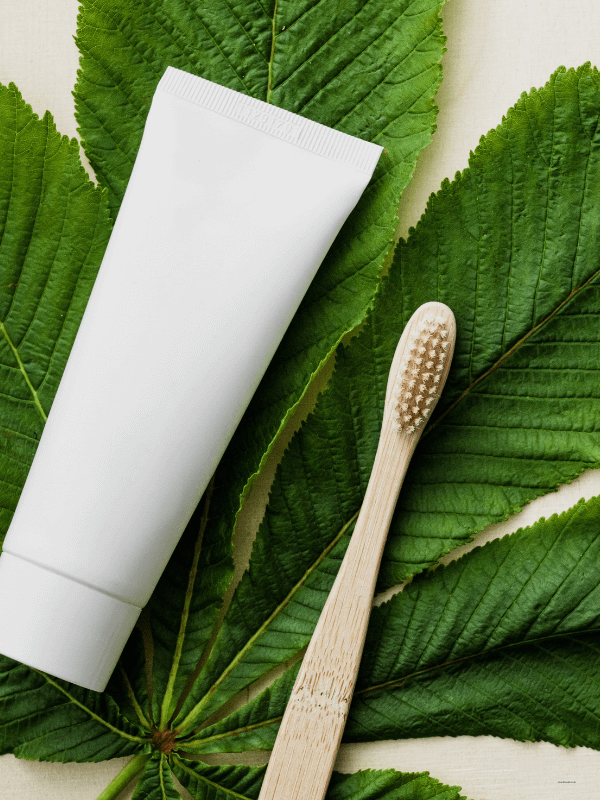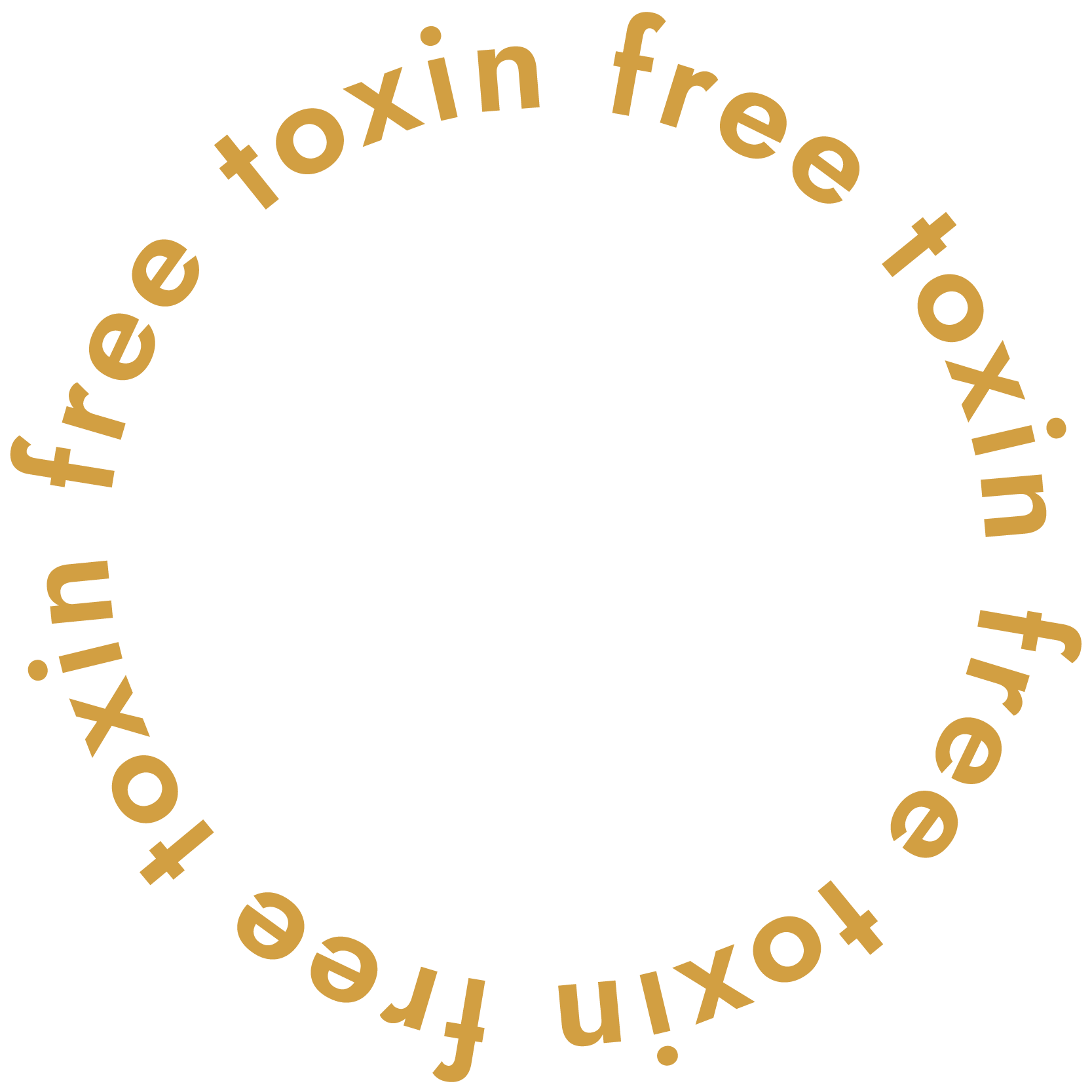Apple Podcasts | Spotify
If you’re tired of fear-based marketing and just want the real, science-backed truth about what’s actually in your non-toxic toothpaste, this episode is for you.
We’re cutting through the noise around nano hydroxyapatite, debunking the scariest claims, and getting honest about what works, what doesn’t, and why your dental health is more personal than anyone’s hot take.
I’m sharing the latest research, my own journey from skeptic to supporter, and real-life stories that don’t make it into the marketing reels.
In this episode, we’re chatting about:
- The truth behind “toxic” nano hydroxyapatite claims and what the science actually says
- How European and Japanese regulators have approached nano-hydroxyapatite safety
- Why some people thrive on natural toothpaste—and why others end up with more cavities
- The practical realities of switching your family to non-fluoride options (and what to do if it’s not working)
- How to tune out the judgment and make the best choice for your own mouth (and your kids’)
You’ll also hear why I think Zebra’s toothpaste is great, just not for the reasons their marketing team wants you to believe. Plus, I’ll break down the most common myths about ingredients like glycerin and fluoride, and share my no-shame approach to finding what actually works for you.
If you’ve ever felt overwhelmed by conflicting advice, or just want to brush your teeth without second-guessing every ingredient, this episode will give you the clarity (and peace of mind) you need.
Zebra Toothpaste
Jenn, the owner of Zebra, makes a phenomenal, super clean toothpaste. Her son had a brain tumor, and sometimes when you have experiences like that, you can become the world’s greatest proponent for something good. You can really change industries because you have this deep passion and need to do that.
And I think that can be a good thing. But I think in this case, she’s so overly cautious, and I don’t think that translates into how the rest of us should be processing science.
One of the things she says is that only two studies show that nano-hydroxyapatite doesn’t cross the blood-brain barrier, and that they were conducted by the people who own the patent.
That is absolutely false. There are over 700 published peer-reviewed studies on the safety and efficacy of nano-hydroxyapatite, and not all are conducted by people who own the patents. Universities and medical professionals do these, and they span over 40 years.
It’s frustrating to see a toothpaste company that makes a very clean product use misleading data and fear tactics to scare you into buying their toothpaste.
We have a lot of recent data, so what does it say?
Scientific Studies on Nano Hydroxyapatite
A lot of people like to point to the European Union Scientific study on consumer safety because that is where you can find the bulk of the information, all in one place. One argument is that the European Union didn’t study this until 2021. And so this is a new thing on the market that we should be cautious about.
But it was never new. It has been in Japan since the 1980s, and it has been approved for anti-cavity protection there since 1993.
The European Union Safety Committee didn’t take up this issue until 2021 because their regulatory framework changed, and they were given guidance, a new responsibility, and a requirement to study nanomaterials and cosmetics, including oral use. They were given a new policy under their regulations to study all nanomaterials in use, and they had to start studying them right away because they were already in use.
All of the scientific data was out there. Just because the EU didn’t start publicly studying it until 2021 under the regulations does not mean it was not safe before then. They took it up late because a new regulatory framework was required.
2021 was the first time they looked at it, and they found that a lot of the studies the manufacturers and public brought to them had very simple cell studies. The EU really cares about systemic absorption. It’s a big part of their scientific process and evaluation. The final report said they need more information.
In 2023, they looked at it again, now with much more data, and concluded that these particles never cross the epithelial layer, meaning there is no systemic absorption into our bloodstream or the blood-brain barrier.
They looked at two forms of nano-hydroxyapatite. One was needle-shaped and DOES puncture cells, which was found NOT to be safe for use. It is not approved for use in the European Union.
The other form of nano-hydroxyapatite was spherical or rod-shaped. The study found this type does NOT penetrate or even cross the barrier in your mouth. It dissolves almost immediately. It’s chemically identical to natural bone enamel components once it’s ionized. Therefore, under oral care exposures, there is no plausible exposure route by which nano-hydroxyapatite could ever cross the blood-brain barrier.
I always say to know your brand. There are still counterfeit off-brand needle hydroxyapatite products being made to this day. Make sure you’re buying from a reputable brand and company.
Why does nano hydroxyapatite work for some people and not others?
In the European studies, there is one rod-shaped nano hydroxyapatite that is approved, and that’s what I’m talking about. The company that makes it is FLUIDINOVA. Their nano hydroxyapatite toothpaste is called nanoXIM, and it’s a fantastic option.
I’m going to talk about my students’ experiences switching to mineral hydroxyapatite or nano hydroxyapatite toothpaste.
So many of them have been using nano hydroxyapatite toothpaste and love it. They don’t have any problems. Some people switch to nano-hydroxyapatite toothpaste and end up getting cavities and discoloration.
I have a lot of people in my community who have gone back to using a cleaner fluoride toothpaste because they saw such a degradation in their dental care. Having cavities, inflammation, and bleeding gums is really bad systemically for your overall health. So I understand that decision.
People who have really good dental care also usually have mineral and nutrient-rich diets. They have habits that really take care of their teeth and diet. They’re overall healthy. They make the switch and don’t have a problem.
I think many of the efficacy studies showing that nano-hydroxyapatite is effective for anti-cavity prevention and whitening align with your habits. I think it comes down to diet, lifestyle, oral hygiene, the microbiome of your mouth, and genetics.
It’s really hard to buy multiple different toothpastes. These are pricier than typical toothpastes you find in stores. Trying new ones for a few months to see what works for you is expensive, hard, and tedious. I get that this is not an easy switch for some people.
Let’s Stop the Judgement
I am just really tired of all the judgment out here in this non-toxic community. What I hope you get out of this episode is to try something and see if it works for you. Nothing is black and white. What other people do on the internet can be helpful for ideas, but it doesn’t mean that it applies to you.
Every single toothpaste company on my toxin-free shopping guide has shown me where they source their nano-hydroxyapatite. If you’re shopping from my toxin-free shopping guide, you can be sure the safe, EU-approved nano hydroxyapatite is what’s used in that toothpaste.
FAQs About Non-Toxic Toothpaste
What does Japan use instead of fluoride?
Japan focuses on topical fluoride treatments (such as gels and rinses at dental offices) and on hydroxyapatite, a naturally occurring mineral that helps rebuild tooth enamel.
Which toothpaste is healthiest for teeth?
The healthiest toothpaste: remineralizes enamel, balances oral pH, and avoids harsh abrasives and chemicals. Look for ingredients like nano-hydroxyapatite or calcium phosphates. I love the companies Boka and RiseWell.
What do holistic dentists recommend for toothpaste?
Holistic or biological dentists typically recommend fluoride-free formulas with mineral hydroxyapatite. They recommend toothpastes that support the oral microbiome and overall body health.
Why don’t dentists use fluoride anymore?
Most conventional dentists still use fluoride, but dentists avoid it due to concerns about toxicity from overexposure (especially in children) and potential thyroid and neurological effects. Instead, these practitioners prefer non-toxic remineralizing agents, such as hydroxyapatite, which provide similar cavity protection without systemic risks.
Links Mentioned In This Episode:
Related Episodes:
Episode 75: Uncovering the Truth Behind RiseWell Toothpaste PFAS Allegations and Lawsuit


+ show Comments
- Hide Comments